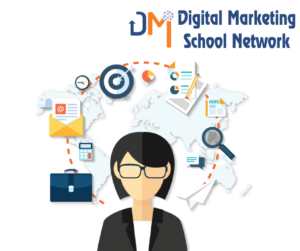Warning: Undefined array key "sfsi_plus_original_counts" in /home2/dmsni9b4/public_html/blog/wp-content/plugins/ultimate-social-media-plus/libs/controllers/sfsiocns_OnPosts.php on line 47
Warning: Undefined array key "sfsi_plus_original_counts" in /home2/dmsni9b4/public_html/blog/wp-content/plugins/ultimate-social-media-plus/libs/controllers/sfsiocns_OnPosts.php on line 204
Warning: Undefined array key "sfsi_plus_original_counts" in /home2/dmsni9b4/public_html/blog/wp-content/plugins/ultimate-social-media-plus/libs/controllers/sfsiocns_OnPosts.php on line 47
Warning: Undefined array key "sfsi_plus_original_counts" in /home2/dmsni9b4/public_html/blog/wp-content/plugins/ultimate-social-media-plus/libs/controllers/sfsiocns_OnPosts.php on line 204
While things aren’t that dangerous for many designers, there is measure still enhancements to be created. A survey we tend to recently conducted at Wrike offers America some new insights into the challenges that artistic professionals face once making an attempt to induce work done.
It seems that a number of the largest challenges are measure caused by lack of visibility and lack of method between artistic professionals and their stakeholders in business roles. However, groups must get on an equivalent page regarding the way to best work along, and have respect for the stresses one another face.
1. Remember that creator are partners and specialists
One of the highest 3 challenges creatives known in our survey was “being seen as a service supplier and not a partner.” This mentality probably implies that individual measure causation ideas to creatives and raise them to execute, instead of collaborating with the artistic team to come up with ideas early within the project to assist develop impactful ideas.
By education and naturally, artistic professionals typically inspect promoting and storytelling otherwise. Their artistic and inventive views are a measure even as valuable as their counterparts in business and operations, and yet, they’re not forever treated that means.
When we raise creatives to execute ideas from non-creative groups, we tend to underutilize their strengths for simplifying advanced ideas into visually placing items of art. fifty-four of our survey respondents aforementioned another leading challenge is there’s “not enough time to be creative”. Increasing creative’s involvement in the early stages of the campaign coming up with ought to facilitate overcome this challenge, which can yield robust dividends within the campaign’s results.
2. More details are as under
According to our survey, the second biggest challenge for in-house artistic groups once it involves operating with alternative departments is “not enough details in briefs”. This suggests that designers are measure typically left to forage for the small print they have in conferences or follow up emails; each of that takes valuable time off from doing higher price, artistic work.

3. Keep your communications organized
Above all else, it’s crucial that communications between designers and non-designers keep organized. It’s not uncommon for designers to induce feedback from multiple stakeholders, their stage director, a complete manager, and fellow designers. That’s heaps of conversations to trace and while not correct tools in situ, constructive feedback could fall flat the cracks – lost between emails, chats, and alternative collaboration tools.
Communications fragmentations could be a huge downside for digital staff. In another survey, our team conducted, respondents aforementioned that “missing information” was their favoured supply of stress whereas making an attempt to figure. This doesn’t need to be the case. you’ll be able to offer every quality one, clear thread, that makes all files and comments straightforward to search out, and straightforward to require action upon.
4. Review your assets on time
42% of our respondents aforementioned or a lot of-of their comes are measure delayed, citing the quantity one cause for delays as “reviews and approvals aren’t completed on time”. Take this under consideration once you’re operating with a designer. there’s a result as designers are measure juggling multiple comes, thus delays in one will result in delays in another. facilitate them out by taking the time to review your assets and provide speedy approval or feedback PRN.
Designers will keep the method of moving by setting deadlines for feedback and providing a transparent timeline for milestones and deliverables. Designers ought to additionally create their production calendars offered to the departments that rely on them. The visibility into their busy schedules and employment ought to offer the soft persuasion required to encourage stakeholders to require action.

5. Minimize unexpected requests
An ad hoc request is some things that appear little to the person creating it, however, it still needs time and energy from a designer. sixty-one of designers say they get unexpected requests a minimum of once per week, that is perhaps not stunning to any designers reading this text. a little update to associate existing quality could solely take some minutes, however, it’s riotous to the artistic flow of somebody whose targeted on larger, complete shaping ideas.
Creatives will facilitate themselves by filtering all requests through an equivalent method for programming and prioritization. “It’s simply a fast tweak,” shouldn’t be an associate excuse for derailing a designer’s entire schedule. artistic managers aren’t doing their groups any favours by accommodating unexpected requests while not pushing back. It ought to be the responsibility of alternative departments to try and do a more robust job of assessing their desired assets well ahead and coming up with consequently.
Designers will facilitate their non-creative stakeholders by golf shot processes in situ that foster execution with clarity with respect for competing priorities in a corporation. Non-creatives will facilitate designers by thinking strategically regarding their desires well ahead, which can facilitate scale back unexpected and second requests.
Better along
This relationship is often strong through the employment of digital tools for cooperative work management that walk stakeholders through the steps of submitting careful briefs, and designers through the steps of delivering and iterating on their creations. As partners, creatives and non-creatives will manufacture nice work that outlines their brands and merchandise – on time.

